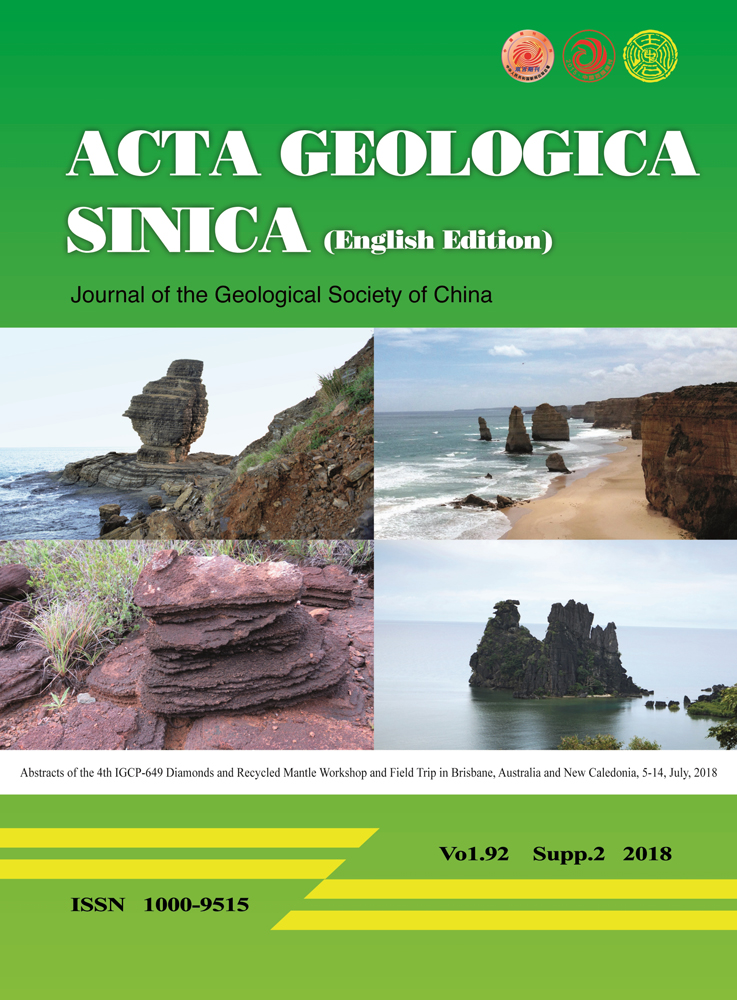Kalaymyo Peridotite Massif in the Indo-Myanmar Ranges (western Myanmar): Its Mineralogy, Geochemistry and Tectonic Implications
Abstract
Mesozoic ophiolites crop out discontinuously in the Indo-Myanmar Ranges in NE India and Myanmar, and represent the remnants of the Neotethyan oceanic lithosphere. These ophiolites in the Indo-Myanmar Ranges are the southern continuation of the Neotethyan ophiolites occurring along the Yarlung Zangbo Suture Zone in southern Tibet farther northwes, as indicated by their coeval crystallization ages and geochemical compositions. The Kalaymyo ophiolite is located in the central part of the Indo-Myanmar Ranges (Myanmar). The Kalaymyo ophiolite are composed of olivine (Fo = 89.8–90.5), orthopyroxene (En86-91Wo1-4Fs8-10; Mg#=89.6–91.9), clinopyroxene (En46-49Wo47-50Fs3-5; Mg# = 90.9–93.6) and spinel (Mg# = 67.1–78.9; Cr# = 13.5–31.5), and have relatively homogeneous whole-rock compositions with Mg# of 90.1–90.8 and SiO2 (41.5–43.65 wt.%), Al2O3 (1.66–2.66 wt.%) and CaO (1.45–2.67 wt.%) contents. They display Light Rare Earth Element (LREE)-depleted chondrite-normalized REE patterns and show a slight enrichment from Pr to La. The Kalaymyo peridotites are characterized by Pd-enriched chondrite-normalized PGE patterns with superchondritic (Pd/Ir)CN ratios (1.15–2.36). Their calculated oxygen fugacities range between QFM–0.57 and QFM+0.90. These features collectively suggest that the Kalaymyo peridotites represent residual upper mantle rocks after low to moderate degrees (5–15%) of partial melting at a mid-ocean-ridge environment. The observed enrichment in LREE and Pd was a result of their reactions with enriched MORB-like melts, percolating through these already depleted, residual peridotites. The Kalaymyo and other ophiolites in the Indo-Myanmar Ranges hence represent mid-ocean ridge–type Tethyan oceanic lithosphere derived from a downgoing plate and accreted into a westward migrating subduction–accretion system along the eastern margin of India.




